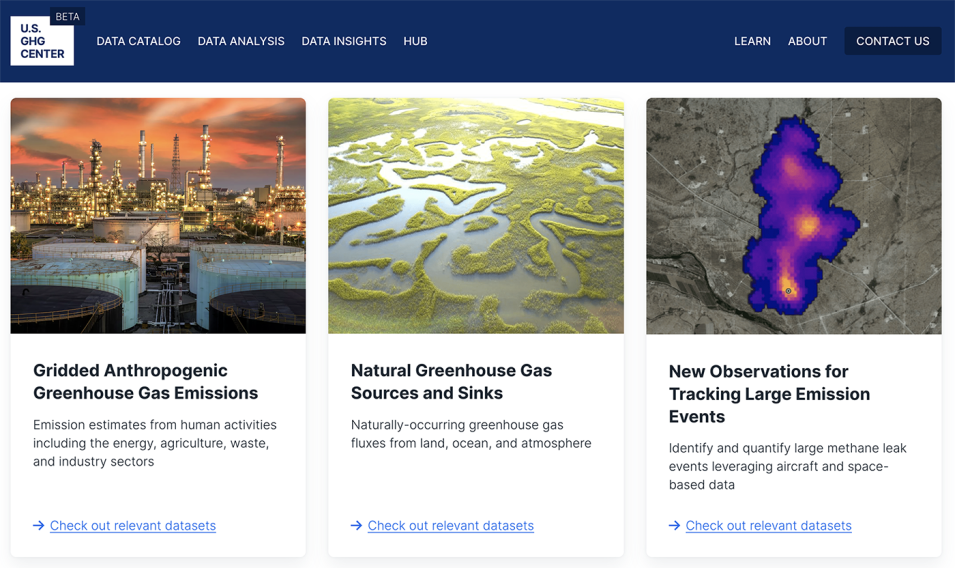On December 4, 2023, NASA and partner agencies announced the launch of the U.S. Greenhouse Gas (GHG) Center portal. The primary aim of the U.S. GHG Center is to expedite the use of Earth science data related to greenhouse gases by offering openly available information in a central location. The GHG Center expands the landscape of open science by providing site visitors with free access to methane, carbon dioxide, and other greenhouse gas datasets coupled with powerful analysis tools and documentation.
Through Data Insight narratives authored by GHG Center team scientists, users can also gain perspectives on how data were collected and how they can be interpreted. Anyone from research scientists to the public can benefit from the content in the U.S. GHG Center.
A group within NASA's Interagency Implementation and Advanced Concepts Team (IMPACT) was—and continues to be—instrumental in building and supporting the U.S. GHG Center portal. The IMPACT GHG Center group is responsible for the design, site development, implementation, maintenance, and daily operations of the U.S. GHG Center portal. This post provides perspectives on the IMPACT effort and the technical aspects of the portal.
Building the Portal
A NASA-led collaboration with scientists from the U.S. Environmental Protection Agency (EPA), National Institute of Standards and Technology (NIST), and National Oceanic and Atmospheric Administration (NOAA) resulted in the launch of the U.S. GHG Center portal in less than six months. By centralizing access to curated, trusted datasets from multiple sources, users have an enhanced capability to explore and compare greenhouse gas emissions and flux data.
The portal was rapidly built by re-using the innovative Visualization, Exploration, and Data Analysis (VEDA) platform. VEDA empowers researchers to explore and analyze Earth science data that are hosted in the cloud. The VEDA system was constructed to unify information and expertise from diverse domains and to create a cohesive platform that fosters collaboration, educates, assists decision makers, and drives novel research. Data visualization capabilities and insight narratives developed by experts are an inherent part of VEDA, which also provides hub access with streamlined optimized datasets in a dedicated cloud computing environment.
Using the VEDA platform as a foundation, the carefully selected datasets in the GHG Center portal, complete with standardized metadata, consolidates information from various sources and eliminates the need for users to navigate to multiple agency and organization websites. The user-friendly data visualization tools empower site visitors to quickly and freely explore the data. Moreover, the scientific community is encouraged to contribute feedback and ideas, ensuring continuous growth and optimization of the GHG Center's functionality.
